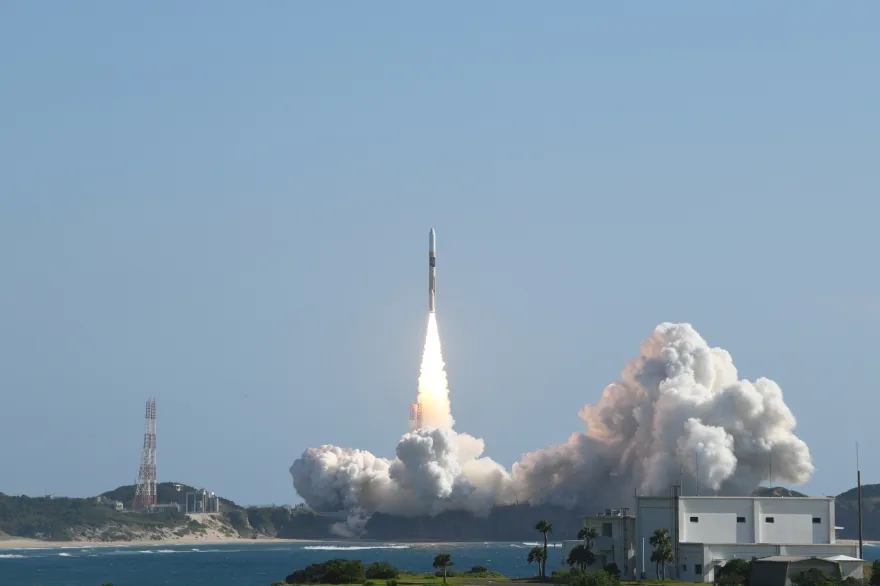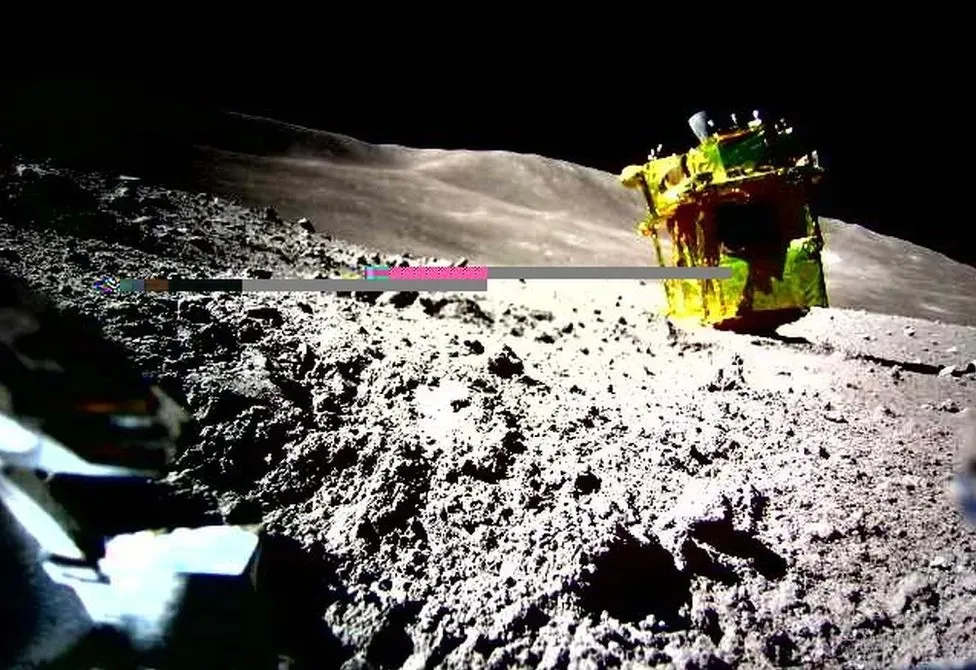Japan’s lunar lander, Smart Lander for Investigating Moon (SLIM) has come back online after nine days of radio silence.
The lander landed on its nose, placing its solar panels in the shade but the Sun has now moved into a position where it can illuminate them.
JAXA will now conduct operations for as long as it can before lunar night falls in a few days time.
What is the SLIM lander?
SLIM from the Japanese Aerospace Agency (JAXA) launched on 6 September 2023, landing on the lunar surface several months later on 19 January at 15:20UT.

The Moon mission’s primary goal was to conduct a precision landing in the Shioil Crater, with a target landing zone just 100m wide.
Soon after the expected touchdown time, NASA’s Deep Space Network received telemetry from the spacecraft, confirming it had landed in one piece.
This achieved the mission’s primary goal and made Japan the fifth nation to successfully soft land on the Moon.
Unfortunately, it soon became apparent the spacecraft’s solar panel system wasn’t charging properly.
JAXA attempted to recover the spacecraft’s operations during the few hours of battery life but were unsuccessful.
They placed the spacecraft into hibernation when the its battery power was diminished, hopeful they would be able to get SLIM back online when the Sun moved into a more favourable positon.
What was wrong with the SLIM lander’s solar panels?
The team were able to determine the cause of the problem thanks to one of SLIM’s two small lunar rovers, Lunar Excursion Vehicle 1 (Lev-1) which were able to deploy successfully.
Lev-1 is designed to communicate directly with Earth, rather than using SLIM as a relay station, meaning the team were able to use the rover’s camera to examine the spacecraft.
These images showed the spacecraft had landed on its nose, blocking its solar panels from the Sun.

How did the SLIM lander get back online?
The team were hopeful that as the Sun moved around during the lunar day, it would be able to illuminate the solar panels and bring SLIM back online.
On the morning on 29 January, JAXA announced that it had successfully re-established contact.
JAXA immediately restarted science operations, analysing the composition of olivine rocks on the lunar surface.
Such rocks are believed to have formed in the mantel layers of infant planets, and so could give insight into how the Moon and other planetary bodies formed.
The delay mean the spacecraft only has a few more days until lunar night falls.
SLIM isn't designed to survive the 14-day long period of darkness and so will probably not resume operations once the new lunar day dawns.

